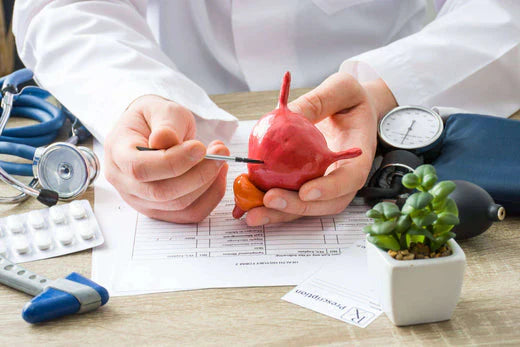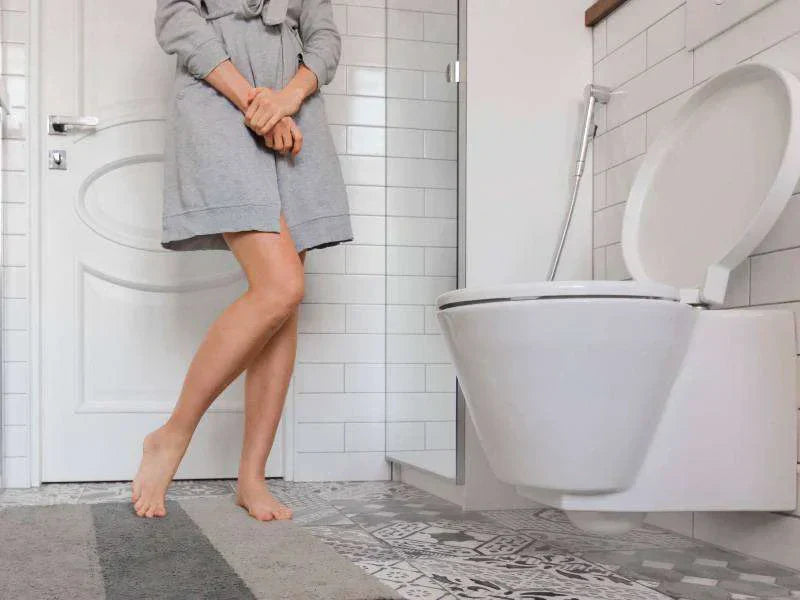Voiding dysfunction is often thought as a problem that only affects older people. However, it is not just a condition of age, but can develop because of other conditions. In most cases it can be prevented and controlled.
What is voiding dysfunction?
Voiding dysfunction is the loss of bladder control. It presents as small leaks, occasionally when coughing or sneezing, or as nocturia. In other cases, you have an urge so sudden and strong that you don't make it to the toilet in time (Mayo Clinic, 2019). The condition affects all genders and ages. However, it is about twice as common in women. It is sometimes temporary, but can also become chronic (Shenot, 2021).
Types of voiding dysfunction
There are several types of incontinence, each with their own symptoms (Medlineplus, 2022):
- Effort: when coughing, sneezing, laughing, heavy lifting or physical activity leaks small amounts of urine.
- Urgency: the urge to urinate is very strong, and small amounts are lost before reaching the toilet.
- Mixed: more than one type, this is a combination. Usually a combination of effort and urgency.
- Functional: when a decrease in physical or mental capacity prevents getting to the toilet in time. As in arthritis or Alzheimer's disease.
- Transient: caused by an infection or a new medication.
- Bedwetting: more common in children, occurs while the person is sleeping. In adults, it is caused by some medications.
Causes of voiding dysfunction
Causes can be transient or chronic. In both cases, factors can trigger or aggravate the symptoms. For example (Medlineplus, 2022; Mayo Clinic, 2019):
- Weakness of the pelvic floor muscles.
- Bladder out of its normal position.
- Urinary tract infection.
- Tumours.
- Kidney stones.
- Diabetes.
- Alcohol, caffeine, sweeteners, carbonated drinks, chocolate, spicy foods.
- Some medicines, blood pressure and heart medicines, sedatives, and muscle relaxants. High doses of vitamin C.

Risk factors
Main risk factors of voiding disfunction are (Medlineplus, 2022):
- Menopause
- Postpartum
- Pregnancy
- Obesity
- Aging
- Having prostate issues
- Diabetes diagnosis
- Suffering from constipation
- Smoking
- Birth bladder defects
Why does menopause predispose to voiding dysfunction?
During perimenopause there is a continuous decrease in oestrogen and progesterone. In addition to intervening on the menstrual cycle, they regulate muscle function in the vagina, urethra, bladder, and pelvic floor musculature. A decrease in oestrogen is thought to be related to the occurrence of urinary tract diseases during the menopause. These include pelvic organ prolapse, voiding dysfunction and repeated urinary tract infections (Llajaruna & Urbina, 2021). In addition, during this period, the decrease in oestrogen is associated with muscle weakness caused by age-related degeneration. However, these diseases are also associated with the accumulation of factors such as vaginal births, previous pregnancies, or constipation (Llajaruna & Urbina, 2021).
Diagnosis of voiding dysfunction
To diagnose this condition, a medical professional may:
- Ask the patient to note how much and when they drink fluids, when and how much they urinate, and whether they leak urine.
- Do a rectal examination to determine whether you have fecal incontinence. Likewise, a vaginal examination.
- Blood and urine tests.
- Bladder function tests.
- Ultrasound, cystoscopy.
Main prevention measures
Basic principles include lifestyle changes such as (Llajaruna & Urbina, 2021; NIDDK, 2018):
- Decrease caffeine intake
- If overweight or obese, start a healthy diet.
- Training pelvic floor muscles with Kegel exercises.
- Keep diabetes under control.
- Drink plenty of fluids, usually urinating every 2 to 3 hours.
- Avoid smoking.
- Treat constipation.
- Preventive medication is not recommended at this time.
- Treatment with oestrogens in some cases may predispose to the development of the disease and must be indicated by a doctor.
In short, the menopause influences the appearance of this problem. However, it can be prevented and treated. For this reason, you should consult a specialist who will indicate the appropriate treatment for you.
References:
- Llajaruna, E., & Urbina, K. (2021). Artículo de revisión Incontinencia urinaria de esfuerzo femenina. Interciencia Médica, 11(3),12-21. https://wp-intercienciamedica-prd.azurewebsites.net/wp-content/uploads/2022/01/revista-interciencia-noviembre-2022-12-21.pdf
- Mayo Clinic. (2019). Incontinencia urinaria - Síntomas y causas. https://www.mayoclinic.org/es-es/diseases-conditions/urinary-incontinence/symptoms-causes/syc-20352808 Medlineplus. (2022). Incontinencia urinaria. https://medlineplus.gov/spanish/urinaryincontinence.html#:~:text=La%20incontinencia%20urinaria%20es%20la
- NIDDK. (2018). Prevención de los problemas de control de la vejiga (incontinencia urinaria) y salud de la vejiga https://www.niddk.nih.gov/health-information/informacion-de-la-salud/enfermedades-urologicas/problemas-de-control-de-la-vejiga-incontinencia-urinaria/prevencion
- Shenot, P. J. (2021). Incontinencia urinaria en adultos. Manual MSD Versión Para Público General; Manuales MSD. https://www.msdmanuals.com/es/hogar/trastornos-renales-y-del-tracto-urinario/trastornos-de-la-micci%C3%B3n/incontinencia-urinaria-en-adultos
You May Also Like

JOIN US AND GET 10% OFF
Sign up to our newsletter to access free resources, advice and support.















